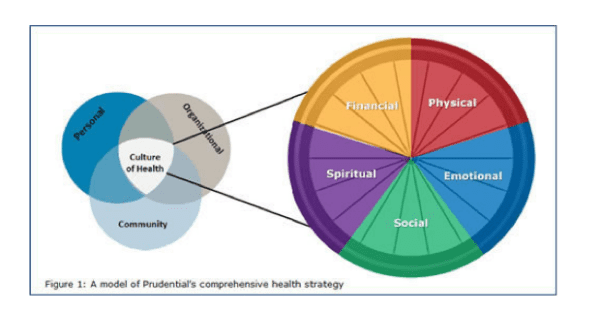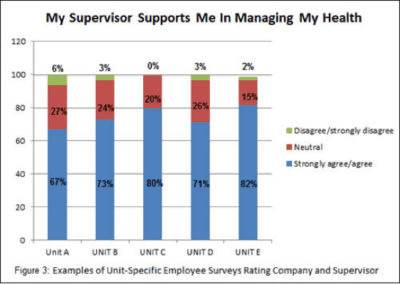There are several ways of supporting mental well-being in the workplace. In this blog, we are highlighting empathy as an important skill for managers and team members to improve employees’ well-being.
Mental Health Awareness Month is taking place in May. It was established in the United States in 1949 by The Mental Health American Organisation (MHA) to increase awareness of the importance of mental health and the effect it has on people’s lives.
Mental Health is a necessary conversation for everyone in society including one within the workplace (Memish, et al. 2017). A poll done by the Time to Change Charity in 2017 showed that just 13% of employees were comfortable talking about mental illness at work.
Empathy is the ability to understand the needs of others and being aware of their feelings and thoughts. It is a key part of emotional intelligence and has become a vital leadership competency. We have collected 10 tips for companies/leaders to practice empathy with employees and co-workers.
- Be approachable
- Active listening
- Talk about mental health and offer help
- Establish trusting relationships
- Take interest in others personal lives
- Show compassion
- Be encouraging
- Be supportive
- Avoiding judgement
- Show gratitude
These tips are interrelated. An empathetic leader will engage in active listening, show compassion and establish a trusting relationship with the employee.
Since the unprecedented arrival of COVID-19 mental health support at work has become a more prevalent topic in many organisations’ agendas.
It has also raised the question of including Mental Health as part of ESG (Environmental, Social and Governance). At this present time, the ESG measure does not capture the impact of a company’s well-being program. (Deloitte “Well-being: A new cornerstone for ESG strategy and reporting – Part one”).
Forbes published an article in 2021 “Why ESG metrics & strategies should include mental health” which explains the benefits of standardise and measure mental health to determine the impact in organisations.
As an example, Prudential Financial, an insurance and financial services company, has developed a comprehensive health strategy to support employee mental health. They promote five dimensions of health based on the World Health Organization (WHO) definition of health.

Prudential facilitates regular training for leaders and supervisors to help them understand, recognise, support, and respond to potential distress in employees. The training helps managers to enhance their abilities to establish a healthy workplace.
Prudential Financial measured the positive impact of the training through employee engagement surveys. The following survey represents the level of support employees felt from their supervisors. In all the units, employees strongly believe that their supervisors support their mental health after the training was implemented. The survey results are then used to help the health and well-being team to improve their training methods.

Companies which stress the importance of mental health have helped reduce the stigma and have seen beneficial results for both the company and its employees.
On this example, Prudential noticed a change in the employee’s behaviour. Employees became more productive, stress-free, opportunistic and illness related absences also decreased. The company emphasised the importance of mental health within the workplace and their training programmes have proven to be a success.
To conclude, the Mental Health Awareness Month reminds us of our responsibility as individuals and organisations to support people who need mental well-being help. Leading with empathy and including mental health as part of ESG might be a good place to start.
References:
Ali-Khan, S., 2020. The state of mental health in the real estate sector. [Online]
Available at: https://www.propertyweek.com/insight/the-state-of-mental-health-in-the-real-estate-sector/5110523.article
Butcher, S., 2021. First year banking analyst reveals truth about his working hours. [Online]
Available at: https://www.efinancialcareers.co.uk/news/2021/06/working-hours-banks
Campbell-Cooks, A., 2022. Mental health awareness: The importance of conversation. [Online]
Available at: https://www.betterup.com/blog/mental-health-awareness?hsLang=en
Memish, K. et al., 2017. Workplace mental health: An international review of guidelines. Preventative Medicine, 101(0091-7435), pp. 213-222.
Staglin, G., 2021. Why ESG Metrics & Strategies Should Include Mental Health. [Online]
Available at: https://www.forbes.com/sites/onemind/2021/10/14/why-esg-metrics–strategies-should-include-mental-health/?sh=7d054a3f403d
The Center For Workplace Mental Health, 2016. Prudential’s Comprehensive Approach to Supporting Health. [Online]
Available at: https://www.workplacementalhealth.org/case-studies/prudential-financial,-inc
Waters, S., 2021. Mental Health in the workplace: why is it important and what support is available?. [Online]
Available at: https://www.betterup.com/blog/mental-health-in-the-workplace
Weston, S., 2022. Mental health in the workplace: The UK crisis in eight statistics. [Online]
Available at: https://www.mypossibleself.com/blog/mental-health-workplace-uk-crisis-eight-statistics/
Author: Holly Johnson, Emma Wilson and Sonia Martin-Gutierrez
